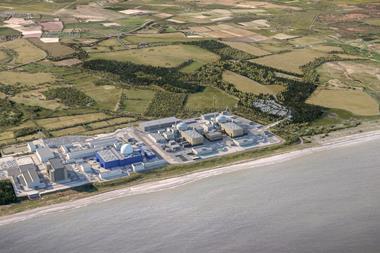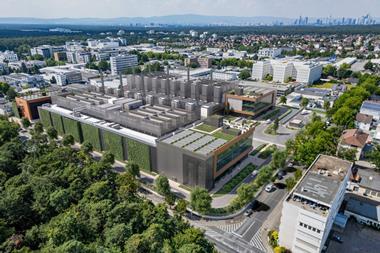The potential for hydrogen in the energy transition and the role of nuclear energy in providing baseload power and utilising waste heat was discussed at this year’s IPE Real Assets Infrastructure & Natural Capital Global Conference in Munich.
Hans Jonk, director at Gasunie Energy Development, Art Pithayachariyakul, principal of sustainable energies at CPP Investments, and Joseph Rippon, head of financial structuring at Sizewell C, highlighted the need for hydrogen infrastructure to support renewable energy integration and the strategic importance of investing in early-stage hydrogen technologies, among other topics.
Rippon talked about the UK’s Sizewell C nuclear power project and how it could contribute to the energy transition. According to Rippon, the government-backed project is close to the start of construction.
“Sizewell C won’t just be an electricity generator,” Rippon said. “The steam produced drives turbines to generate electricity, but in typical nuclear projects two-thirds of that heat energy is wasted.” He explained that Sizewell C is exploring ways to use this waste heat, potentially for hydrogen production, direct air capture (DAC), clean fuels for transportation, district heating and data centres.
Rippon highlighted DAC as a promising application. He said: “Sizewell C is part of a consortium developing a new DAC technology that uses more heat than electricity, making it more efficient.” With government funding and a prototype already in development, the technology could potentially capture 1.5m tons of carbon per year, offsetting the UK’s entire rail network’s annual emissions.
Beyond heat utilisation, Rippon mentioned Sizewell C’s contribution to the hydrogen economy. “During construction, the project will use a fleet of 150 hydrogen-powered buses, requiring new infrastructure and potentially creating future demand for hydrogen,” he said. This will not only promote hydrogen use in the UK but also help develop a hydrogen economy in the local region.
Jonk touched on Gasunie’s ambition to support the energy transition in the Netherlands and in Germany. He said the Dutch midstream gas infrastructure company was transitioning away from methane, and planned to invest €8bn in energy transition infrastructure over the next five to seven years, with €6bn allocated to hydrogen in the Netherlands and Germany.
“Roughly one-third of that number will go into Germany,” Hans said, adding that the key driver for the investment was the growing German power market, which is expected to double in the next 20 years as Germany moves towards net zero.
“The share in the power supply of renewables needs to increase to 90%, or even above 90%,” Hans said. “The energy transition will not happen without hydrogen infrastructure,” he added, pointing to the planned German core grid, a 10,000km backbone for hydrogen infrastructure.
Pithayachariyakul told attendees that the Sustainable Energies Group (SEG) of Canadian pension fund CPP Investments was investing in the early stages of the hydrogen economy.
He explained that SEG had a portfolio of C$30bn (€20bn), with investments across the energy spectrum, including conventional energy, renewables and transition assets. He said this broad expertise “allows us to bring to bear the portfolio and management team expertise across our existing position to think about the risks inherent in early-stage hydrogen production investments”.
Regarding the Canadian investor’s thesis on hydrogen, Pithayachariyakul highlighted a few key points. First, he said they are “starting with existing users of gray hydrogen” in industrial sectors like refineries, steel and petrochemicals, as “having customers and value chain that know how to handle it could help us mitigate the risk of safety incidents and process incidents.”
Additionally, he mentioned that CPP Investments had taken a “platform approach” to investing in hydrogen, backing “teams who have knowledge of development construction and ultimately operating these assets” rather than making direct large-scale investments. He explained that this “de-risking of asset and also portfolio, is a source of return” for CPP Investments.
To read the latest IPE Real Assets magazine click here.























